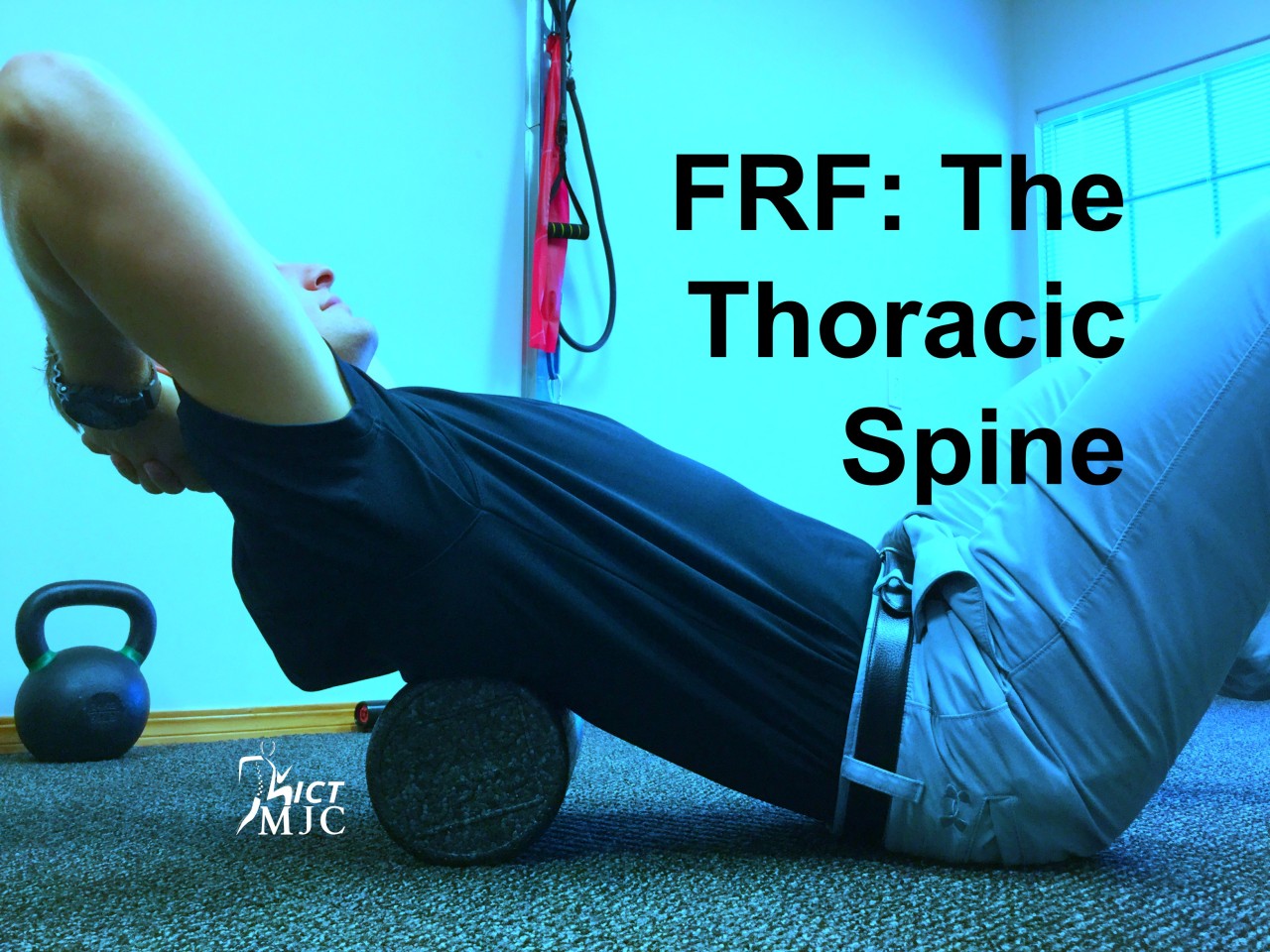Foam Rolling Friday: The Thoracic Spine
I call this one the Chiro-killa! Now I say this jokingly, but foaming the Thoracic spine, commonly referred to as the Tsp, is a great way to help mobilize the mid back. With many occupations becoming desk bound the Tsp becomes excessively rounded. Foam rolling this area can help “straighten” the spine out adding to improved health in many areas throughout the body.
The Functional Anatomy
The Tsp is the area of your spine between your shoulder blades, lower back and your neck. It is a huge transitional area for the body. Transitional areas are key areas of the body that dictate how other areas of the body function. Think of them as keystones for your body.
There are twelve vertebrae that make up the thoracic spine, but functionally that's not necessarily the case. The top Tsp vertebrae will commonly share characteristics with the lower Cervical spine vertebra as will the lower thoracic vertebra share characteristics with the upper lumbar vertebra. As a result of sharing features with the nehboring areas, the thoracic spine will function, differently, in occordance with these areas. It is never black and white when addressing the body and mechanics.
The body is dictated by function. Function is what drives everything and creates structure. If an area of the body cannot move efficiently than the area above or the area below have to compensate and make up for that lack of motion. It's important to understand this because the brain does not always care about efficiency. Way back in the day when we had to reach up and grab an apple off the tree the brain did not care how you did it other than you got from point A to point B and the goal was achieved. The body-brain connection still works this way.
If the thoracic spine cannot extend properly than the areas above and below have to compensate and make up for that lack of motion. This is important in regards to disc herniations, arthritis, and other degenerative phrases. These areas (neck and low back) often become hyper mobile to make up for the lack of thoracic extension. As a result, the body will lay down new bone (Wolff's law) or trigger points in order to stabilize the unstable neck and lower back. I see this all the time clinically. Functionally the cervical spine extends to the 4th thoracic vertebra. If the 1st to the 4th thoracic vertebra do not move effectively in accordance with the cervical spine you will get areas of hypermobility in the middle of the cervical spine where we see the most herniated discs and degeneration.
The Why
Foam rolling the thoracic spine can help directly improve the mechanics of the mid back and indirectly the mechanics in the cervical and lumbar spine. This is not a stand alone answer to treating the thoracic spine, however, it can help improve your mechanics and decrease your pain. Another common area that foam rolling the Tsp can help aid is the shoulder. Foam rolling the mid back feels great to almost everyone and is an area where foam rolling everyday may keep the doctor away.
Remember that the body is a whole functioning unit. The body is not a collection of separate and distinct areas. If one area of the body is underperforming than the whole body is limited, not just that area. Think of it this way, if you start bench pressing and I stab you in the leg with a fork I promise you it is going to effect your bench. Performance and pain in one area effects the body globally. So, get up, grab your foam roller, and give it a shot. What do you really have to lose?
About the author
Dr. Keith Sparks is an award-winning chiropractor, functional medicine expert, and the co-founder of ICT Muscle & Joint Clinic. Dr. Sparks’ emphasis of care originated within the fields of rehabilitation, soft-tissue therapies, and chiropractic. To date, he has brought this unique combination of skills into union with functional medicine. The sole purpose of intertwining these distinct skills, knowledge, and services is to provide incomparable care to his local community. Dr. Keith Sparks is often seen in the Wichita, KS community speaking at business events and teaching health and performance classes.
